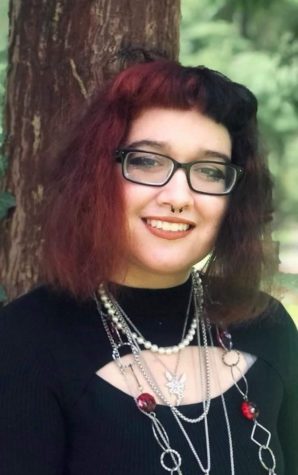Breaking the Stigma: Sleep Conditions
November 22, 2022
Sleep is necessary to maintain physical and mental wellness yet many humans experience sleep impairment, with 28% of the U.S. population reporting excessive sleepy feelings throughout the day according to “Abnormal Psychology” by Barlow et al.
These conditions include a range of disorders from insomnia to hypersomnia, narcolepsy to sleep apnea and sleep paralysis. The Observer interviewed two CWU community members to feature their experiences with sleep paralysis hallucinations and idiopathic hypersomnia in the hopes of supporting those who also experience these symptoms and spreading awareness.
Sleep Paralysis & Hallucinations
According to the National Institute of Mental Health, sleep paralysis is “the state associated with the inability to move” when an individual is waking up or dozing off as they transition to or from Rapid Eye Movement (REM) sleep.
This state can cause vivid and disturbing hallucinations while the individual is paralyzed, some of which are “hypnopompic,” occurring as a person is waking up, or “hypnogogic,” occurring when an individual is falling asleep. These hallucinations may be responsible for a portion of claimed UFO sightings, according to a study by Spanos et al. in 1993, which showed that 60% of reported UFO sightings were associated with sleep episodes.
According to statistics shared on the NIMH website, 8% of the population has experienced sleep paralysis. This phenomenon is often accompanied by a feeling of pressure like something is sitting on the chest, as was the case for CWU alumna Meghan Rochelle.
Rochelle said she had a traumatic experience having to put her dog to sleep during her freshman year, and later that night had her first experience of sleep paralysis.
“When I was falling asleep, I heard my dog’s collar ringing, which is very traumatizing because I thought my dog was alive for a second,” Rochelle said. “I was asleep. I could hear my dog’s collar ringing, I could see myself in my room … I didn’t know if I was hallucinating or not.”
Rochelle said it felt like somebody was sitting on the edge of her bed, perhaps her mother, but in the morning she asked her mom and her mom said she had not come into Rochelle’s room.
“I felt a very negative energy in the room,” Rochelle said. “I’m not normally like a very spiritual person, but I felt it was very demonic. Then all of a sudden, I felt the pressure on my chest … I felt like someone was pushing on me, and forcing me down. All I could think was ‘don’t wake up, don’t wake up.’ Because if you wake up and someone is in your room, that’s more scary than if you just keep your eyes closed.”
Rochelle said she has experienced sleep paralysis 10-15 times since this occurrence in 2016 and that these experiences have caused her to have spikes in anxiety and paranoia.
Rochelle said the “most terrifying” experience she had included seeing a man she had never seen before in her room who appeared to be real.
“Last year, I was sleeping at my parents house for the holidays,” Rochelle said. “I woke up and I saw an actual person in my room. They were very solid looking. He had a face mask on, like a COVID-like face mask. He had Timberlands on, a plaid jacket, curly hair, wearing a beanie and he was staring at me … I woke up and I was screaming at him.”
Rochelle said she yelled at him asking who he was, and tripped out of bed toward the figure. When she reached for him, she said he disintegrated like a ghost or a hallucination.
“I thought, ‘I’m not dreaming, I’m clearly awake,’ and I started going crazy,” Rochelle said. “I’m having hallucinations when I’m actually awake. That’s when I discovered what hypnopompic and hypnagogic hallucinations were, and that you can lose patience when you wake up and it feels so real.”
Rochelle said she has faced stigma when discussing sleep paralysis with medical professionals, who often categorize these hallucinations as just nightmares. Rochelle said first having these hallucinations made her and her family question her mental stability.
“I have never been diagnosed with anything regarding mental health issues besides ADHD, and depression and anxiety,” Rochelle said. “So having these hallucinations made me wonder. I got to the doctor to see about what’s going on and as soon as I told them, I felt like I could feel the judgment … Because doctors, they can’t really diagnose you with that easily. You have to go to see a psychiatrist, and I tried to make an appointment, but they didn’t have any availability until six months later.”
Rochelle said people with this condition can be more supported by CWU and the counseling center if there was a space of non-judgment where these types of behaviors could be discussed openly.
“I feel like professors can take mental health issues more seriously, mental health days are important,” Rochelle said. “I had a lot of people [at CWU] judging me, the medical center there, whether it be the doctors and nurses that they hire there … I feel like they can always be a little bit more compassionate towards people with mental health issues.”
Rochelle said she knew people who didn’t reach out to Student Counseling Services because they were worried about feeling judged in treatment, a common concern expressed by those who do not seek mental healthcare.
Rochelle said those who know people with sleep paralysis can be understanding to them by asking questions like: can you tell me why it’s happening, what you’re seeing, how does this make you feel? Is there anything I can do to help you in reducing your stress? Is there anything I can do to help you feel better?
“In my experience, they’re not life threatening,” Rochelle said. “But it feels life threatening in the moment. If people could understand that there’s a real fear behind this and they’re not just dreams, they’re real life experiences that you’re experiencing fully conscious in the mind. I wish people would understand that if you believe that it’s really happening to you, that’s enough to be traumatizing. This is a real issue that people deal with on a daily basis.”

Idiopathic Hypersomnia
According to the National Library of Medicine, Idiopathic hypersomnia (IH) is “a chronic neurological disorder that results in daytime sleepiness, frequently accompanied by long nocturnal or daytime sleep, unrefreshing sleep, difficulty in awakening, cognitive dysfunction, and autonomic symptoms.” It is similar to the sleep disorder narcolepsy, and is often treated with the same types of stimulant medications.
Ella Colwell, a freshman studying social studies education, said her experience with idiopathic hypersomnia can manifest in sleeping for up to 16 hours a day. Colwell refers to IH as an “invisible illness” that is often not believed when people speak about it due to the lack of visible symptoms.
“With IH, your brain doesn’t tell your body to be awake, it just tells your body to be sleepy, no matter how much rest you get,” Colwell said. “The idiopathic part of the name means doctors and researchers don’t know why your brain does that.”
Colwell said she takes prescribed stimulant medications like Adderall and is also prescribed Iron supplements to help her stay awake.
Colwell said she took a sleep study test two years ago when she was 16.
“They hook up a bunch of wires to you to read your brain waves and your heart rate, and they can tell when you go into REM sleep,” Colwell said. “With idiopathic hypersomnia, you have to fall into REM sleep within three minutes of closing your eyes.”
Colwell said she went through high school sleeping every hour in between school time. She said she experienced a lot of “medical gaslighting” because her bloodwork came back normal and she felt doctors only thought she had depression and anxiety, not a sleeping disorder.
“My aunt has the same condition, so she was able to support me with fighting my own doctors to push them to do more testing,” Colwell said.
Colwell said eventually receiving a diagnosis helped her receive the medications she takes currently and the accommodations she gets from Disability Student Services (DSS) on campus.
Colwell said a diagnosis isn’t needed to treat symptoms, which can be helped by taking Vitamin D, going outside and drinking water, but she said the diagnosis can be helpful for those seeking treatment.
Colwell said DSS didn’t initially recognize idiopathic hypersomnia as a condition when she first approached them, and she had to provide a lot of evidence to prove her condition. She said she hopes DSS can be more open minded to invisible illnesses they haven’t heard of.
“Now it’s recognized through DSS, so other students who have it will hopefully not have to go through a month without accommodations like I did,” Colwell said.
Colwell said people can be supportive of individuals with sleeping disorders by not being upset if they need to cancel last minute, because “it’s not their fault they’re tired. You have your bad days and your good days, the people in your life should know not every day is going to be the same for you.”
Colwell said she also really likes when her friends ask her about her condition instead of making assumptions.
“Everyone who has IH experiences it differently too, so you can’t just rely on one internet source to know everything about your friend’s condition,” Colwell said.
Colwell said she avoids her bed at all costs during the day and stays busy to combat the symptoms of her disorder.
Colwell encouraged students who may have sleeping disorders to not give up hope.
“Don’t let it stop you from doing the things you want to do,” Colwell said. “There’s always some kind of accommodation or some way you can compromise. Don’t think of having a sleeping disorder as a death sentence for your life.”


